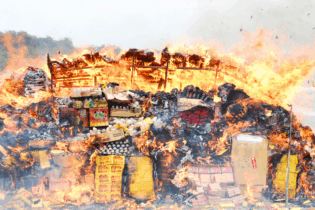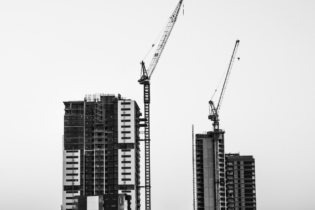Edna Molewa, the Minister of Water and Environmental Affairs, turned the sod on 19 July, marking the commencement of the construction of a new green building for the Department of Environmental Affairs (DEA). The building which will serve as the head office for DEA is located at the corner of Soutpansberg and Steve Biko Roads (former Beatrix Street) in Arcadia, Pretoria.
Minister Molewa was joined by the Director-General, Nosipho Ngcaba and the CEO of Imvelo/Grinaker LTA who attended to witness the historical achievement of a R8 billion project. The Green Building is an investment by government designed to meet green output specifications outlined in the Climate Change Policy, which emphasises the use of sustainable building materials that promotes urban greening, energy and water efficiency. Green buildings have the potential to make a significant impact in terms of reducing South Africa’s electricity consumption. The global economy is rapidly transforming to a low-carbon economy. A transition to a more sustainable development path may help to open up new investment opportunities and export markets; supports the creation of knowledge based economy and allows South Africa to set standards and demonstrate thought leadership. This project is a culmination of many years of hard work and comes after the Director-General of the Department, Nosipho Ngcaba, signed the Public Private Partnership (PPP) Agreement between DEA and the Imvelo / Grinaker LTA. The signing of the PPP Agreement is pursuant to the granting of Treasury Approval III by the National Treasury and the Minister of Finance’s concurrence with the Minister of Environmental Affairs to commit on the future financial obligations of the DEA Green Building Project. The Department of Environmental Affairs conducted a feasibility study in 2006 for its accommodation needs and arrived at the conclusion that the current leased office accommodations no longer meet its fundamental needs. Furthermore, the current premises is also not a proper reflection of what the Department represents, which is to be an exemplary leader in the area of renewable energy, energy consumption, water conservation and taking into account compliance with the provisions of the Electricity Regulation Act, 2006 (Act no 4 of 2006) and the related energy efficiency regulations. As ambassadors and protectors of the environment, the building will be an example in this new era of Green buildings. The new building will cover 34 143 square meters of office space in Gross Lettable Area with an overall size of 3.1309 hectares, and will accommodate 1 305 employees. The parking requirement for the project is 598 parking bays: 4 for VIPs, 438 for staff and 156 for visitors. The project team spent a considerable amount of time searching for a suitable location which meets various needs. The final choice was an area, which provides easy access to departmental staff and visitors including people with disabilities since it is situated where there are retail, medical and public transport amenities.The green building will become a resource centre with facilities including training, conference, catering for prominent international events, amongst other things. It will save the Department the expenses of hiring facilities which is currently the case.
The private partner, awarded the tender to design, construct and finalise the project has the responsibility of considering and aligning the department’s goals with the new building, reflecting its character and image. The facilities management will include building maintenance, cleaning of the facility, energy and utilities supply, waste management, conference facilities, furniture management, parking, pottering and churn management, pest control, internal plants, maintenance, telephone equipment, fire, emergency, landscape maintenance and the help desk facility. The design and construction will be carried over a period of two years and provision of facility management services together with complementary support services for a period of 25 years in accordance with the service requirements of the department. The entire contract period will run for a period of 25 years at a cost of R8 billion.Green elements
The Green Building is designed to maximise and demonstrate energy efficiency and to meet green specifications with respect to:
• Lighting (e.g. the maximisation of natural light sources, compact fluorescent lights, individual switching, movement sensors, etc.)
• Reduction of water consumption as compared to the conventional buildings of similar size
• Efficient Staff Movement (e.g. reduced reliance on lifts, coherent accommodation of interrelated sections, etc.); and
• Indoor/Internal Climate control (e.g. increased passive climate control and reduced reliance on mechanical air conditioning or centralized air conditioning system with customised control for each office/area)
• Demonstrates urban greening (e.g. indoor planting, roof gardens, etc.)
• Uses and demonstrates environment friendly building materials, finishes, furniture and equipment (i.e. no poisonous paints or adhesives, no energy inefficient appliances, no exotic hardwoods, no toxic laminates, etc.)
• Uses and demonstrates efficient resource use – (e.g. reduction of paper use etc.)
• Demonstrates ergonomic and ‘worker-friendly’ work spaces.
• Solar generated power for the facility
• The building is strategically located to cater for commuting mass transport, promote fuel efficient transport and cycling facilities The green building will perform the following green targets:
• Overall energy consumption in the building will be to a maximum of 115kWh/m2/annum
• 10% of the overall energy consumption will be from a renewable energy source
• Municipal water consumption will be 30% lower than that of a conventionally designed identical building (e.g. use of rain water harvested for gardening and bathrooms)
• The use of selected local South African materials and products









